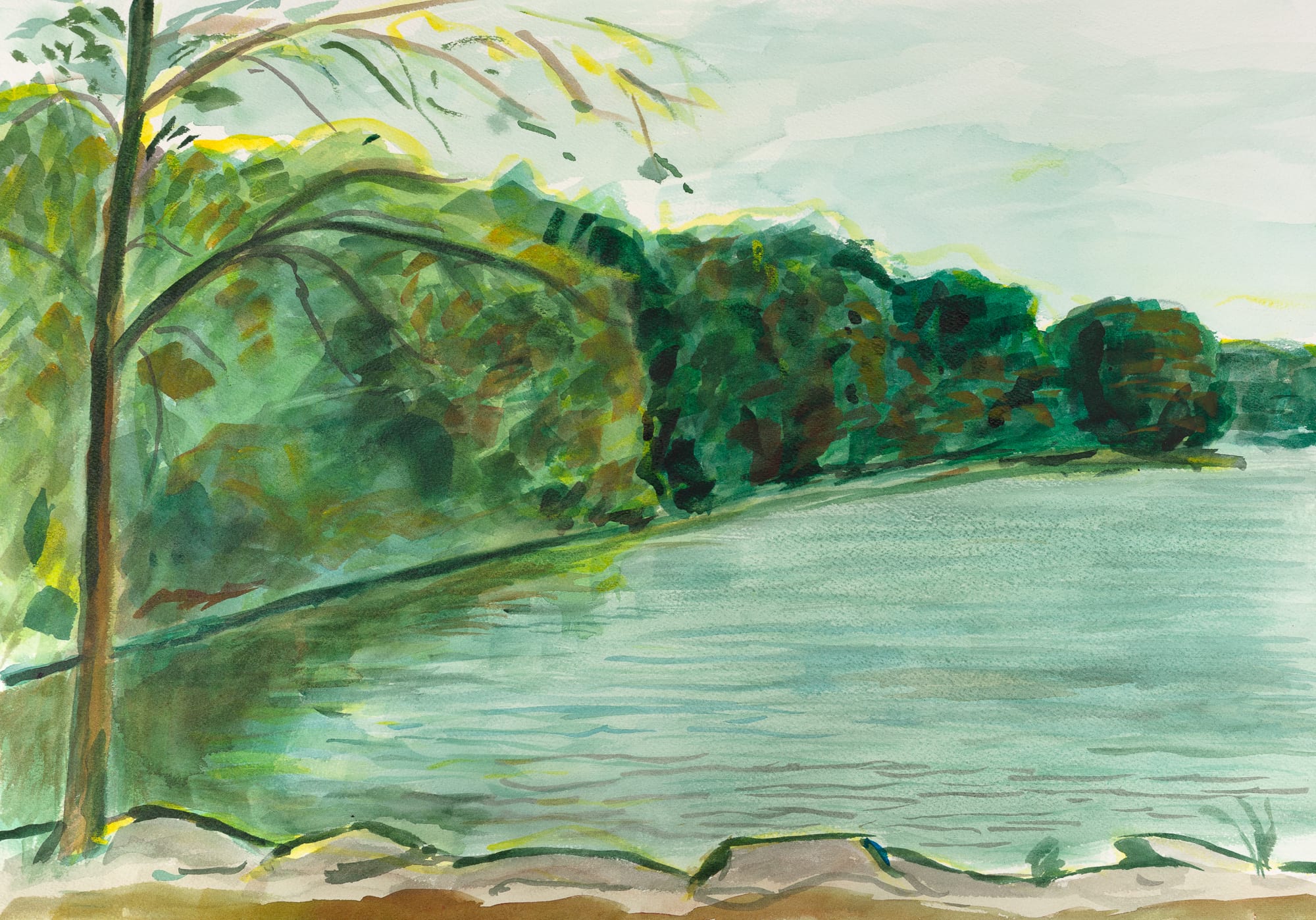Seated on a bench atop the dam in Van Cortlandt Park, I painted the serene Hester and Piero’s Mill Pond, a waterbody recently christened with its new name. This waterbody was created in 1699, when Van Cortlandt had his enslaved people dam Tibbetts Brook in order to power saw and grist mills. Piero was an expert miller of grain and his wife Hester was a domestic servant. They were enslaved people on the Van Cortlandt Plantation. To the left of this view, the water is buried, diverted into the brick broadway sewer, a combined sewer system. This was a decision implemented in 1907 by people with power at that time, and now sends over 5 million gallons of freshwater to the sewage treatment plant each and every day. During wet weather events, combined sewer sewage treatment plants dump raw sewage into the rivers because they exceed capacity. During IDA, this pipe exceeded carrying capacity, leading to Hester and Piero’s Mill Pond overflowing the dam. In regular times, the strainer in front of the gate needs to be cleaned a few times a month to keep it from clogging and overflowing the damn. Looking at the city’s own planning documents for flood projections, it is clear that the water is coming back on it’s own, and we have the choice of ignoring it or inviting it. 114 years after burying the stream, we now want to see it unearthed and routed along the old Putnam railroad right of way.
————-
I sat on a bench with a plaque dedicated to the life of Michael Zamm, an environmentalist and educator, undoubtedly a beloved and important figure in the local landscape. There are relatively few of these in Van Cortlandt Park, especially compared to Central Park; they are expensive. This bench has one of the best “views” in the park, definitely of the lake itself.
It is a long and composed view, central for park goers in this area. It was windy, cold, and grey, and I was a bit under-dressed. Sitting on the bench was more uncomfortable than I’d like. Contrasting the previous day’s heat and humidity, it was a clear reminder of the transient nature of the season. The stone grey water continuously rippled and Canada Geese and mallards ate some peanut butter filled pretzels and processed bread that they’ve come to expect from humans.
In a gesture blending art with environment, I filled my cup with lake water to mix my watercolors, even encountering a lone water chestnut seed, a remnant of the lake’s ecology. I had worked on this lake this summer removing water chestnut to help the ecology of the lake. We made a small dent. IDA, the storm, removed nearly all of it as the lake overspilled it’s shoreline. But the water chestnut had already dropped it’s seed. IDA earlier in the summer would have been very effective invasive species control.
A bench further along this dam was toppled by the flood waters of IDA as the lake spilled over. The park was buzzing with people for a cross country invitational meet.
Many people observed passing by: a handful of smiles and several nods. Constant traffic to and from the nearby restroom provided a steady stream of people all day.
As I was getting into the painting, Jerry, a retired art teacher I’ve seen teaching groups in the park before, sat with me to offer pointers.
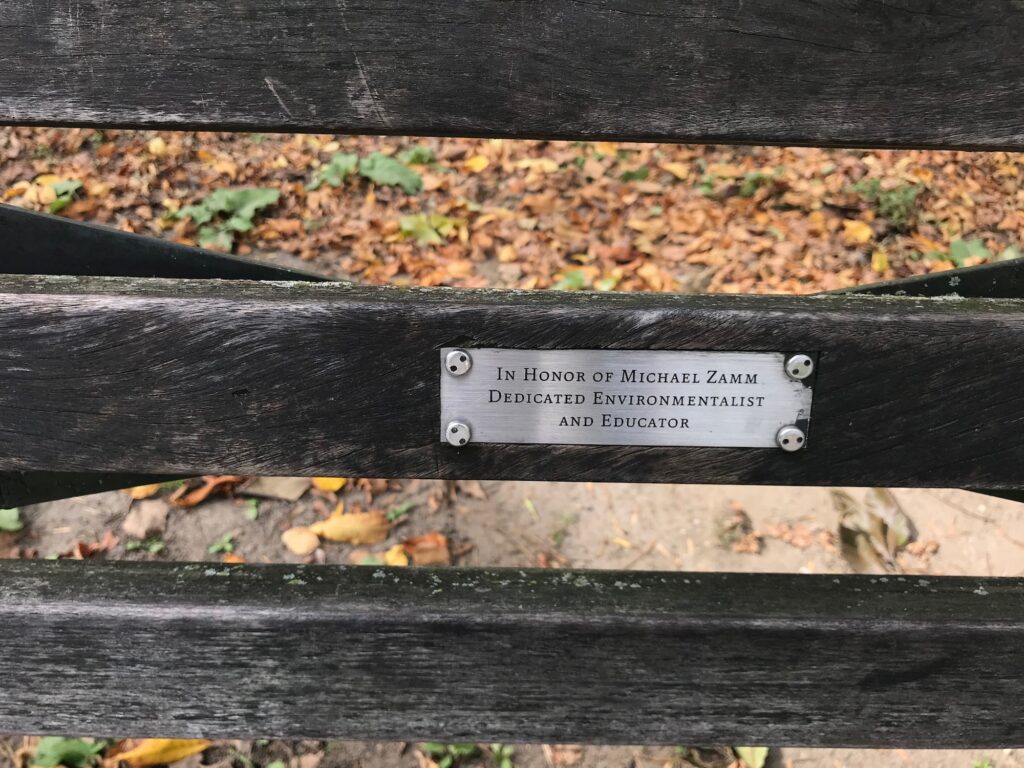
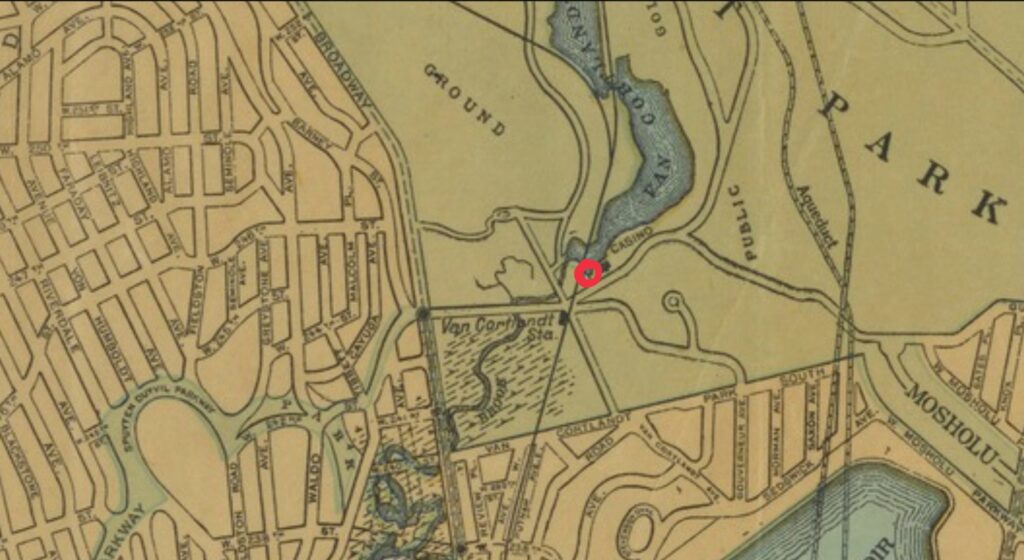
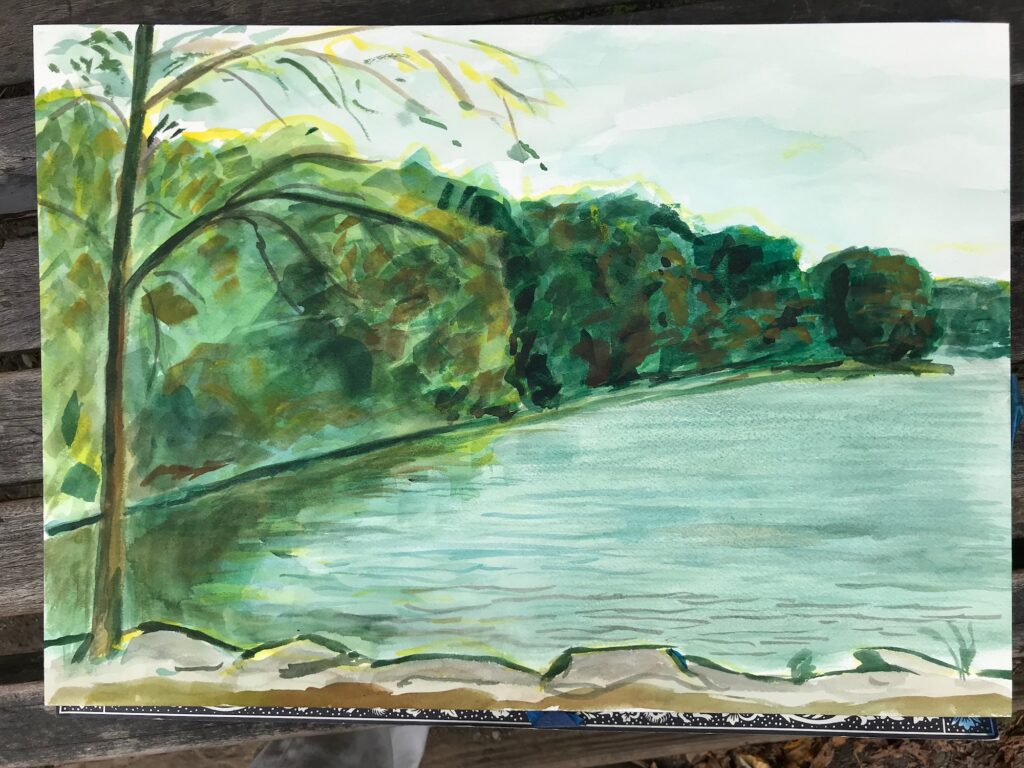
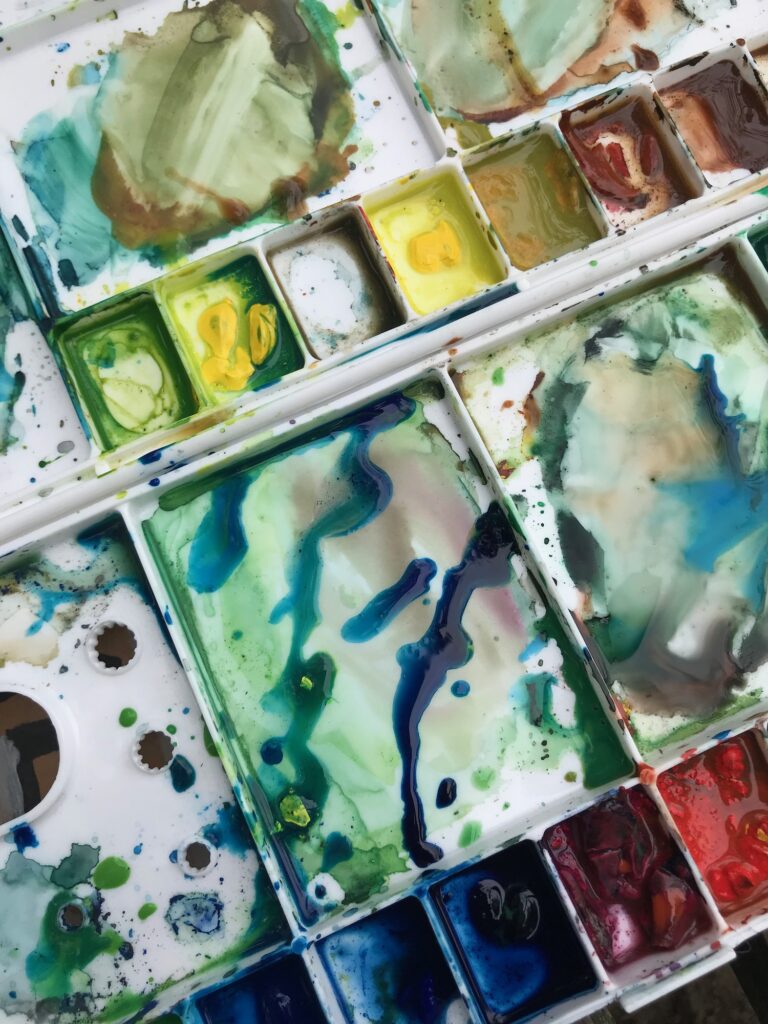
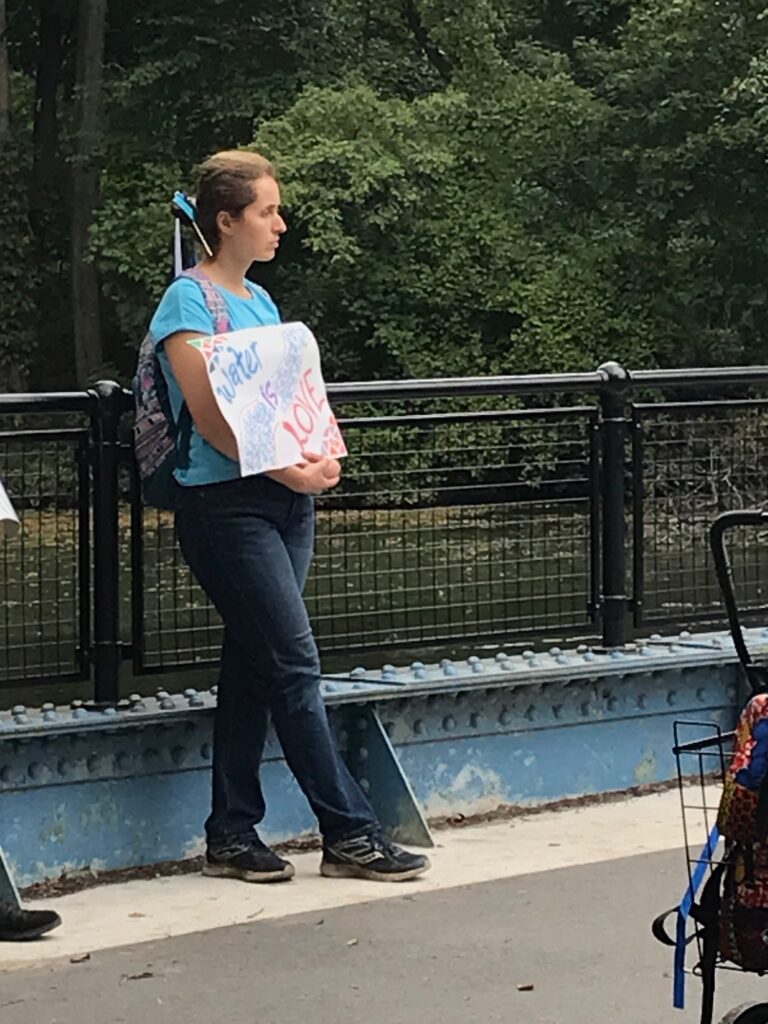

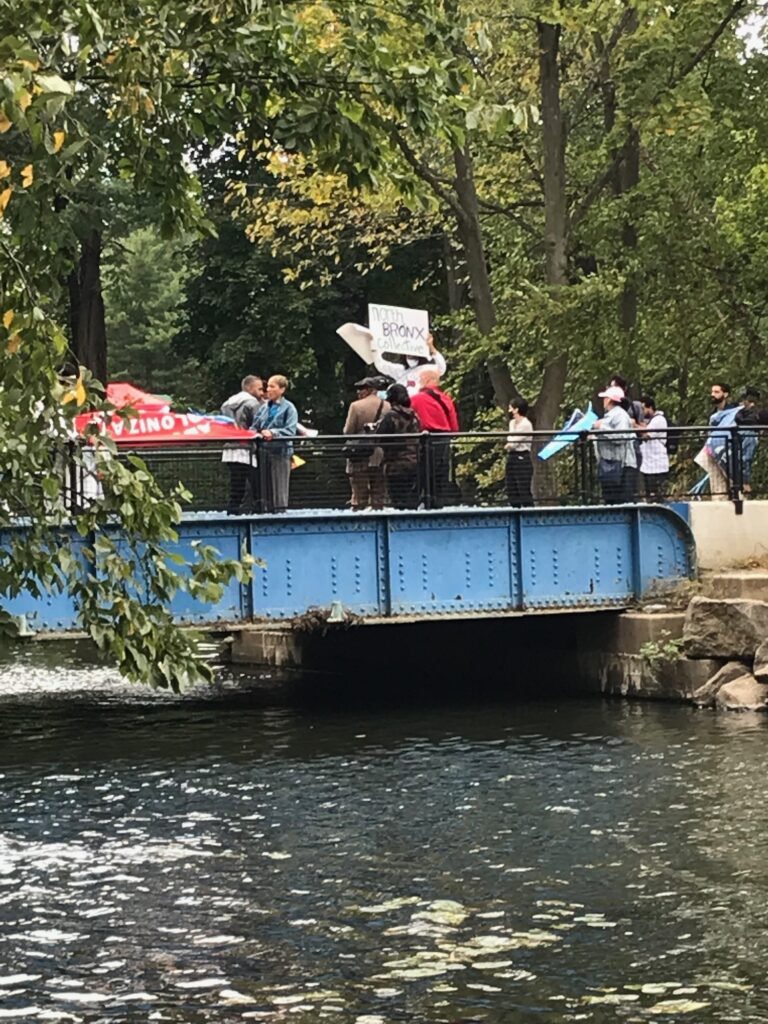
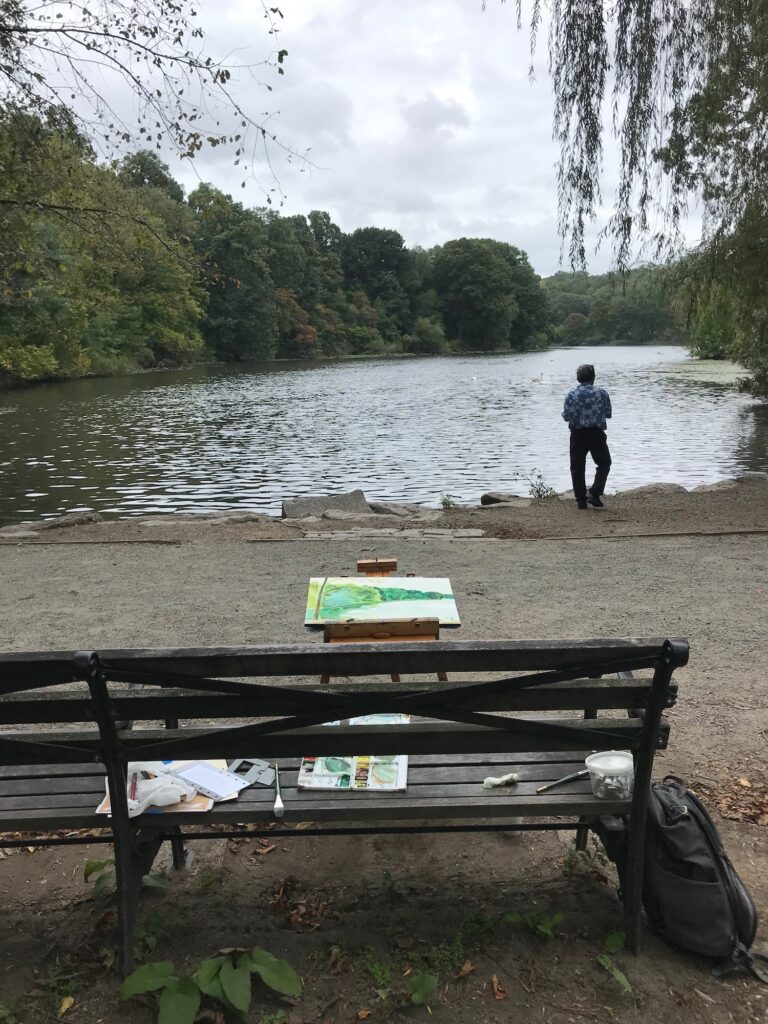
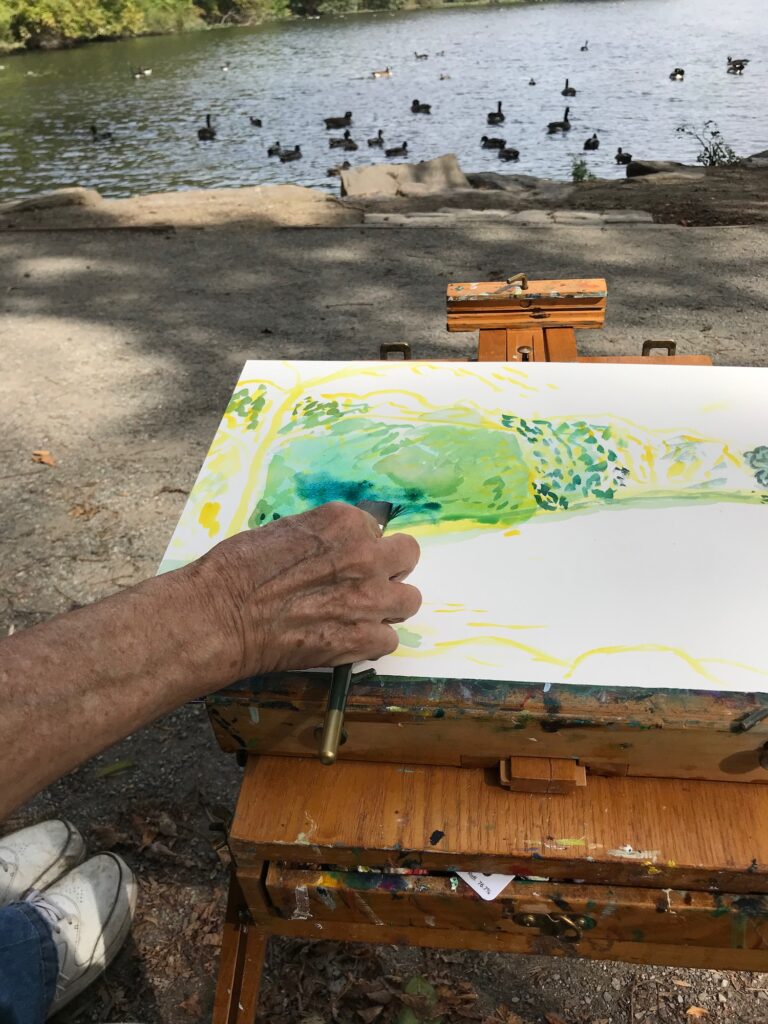
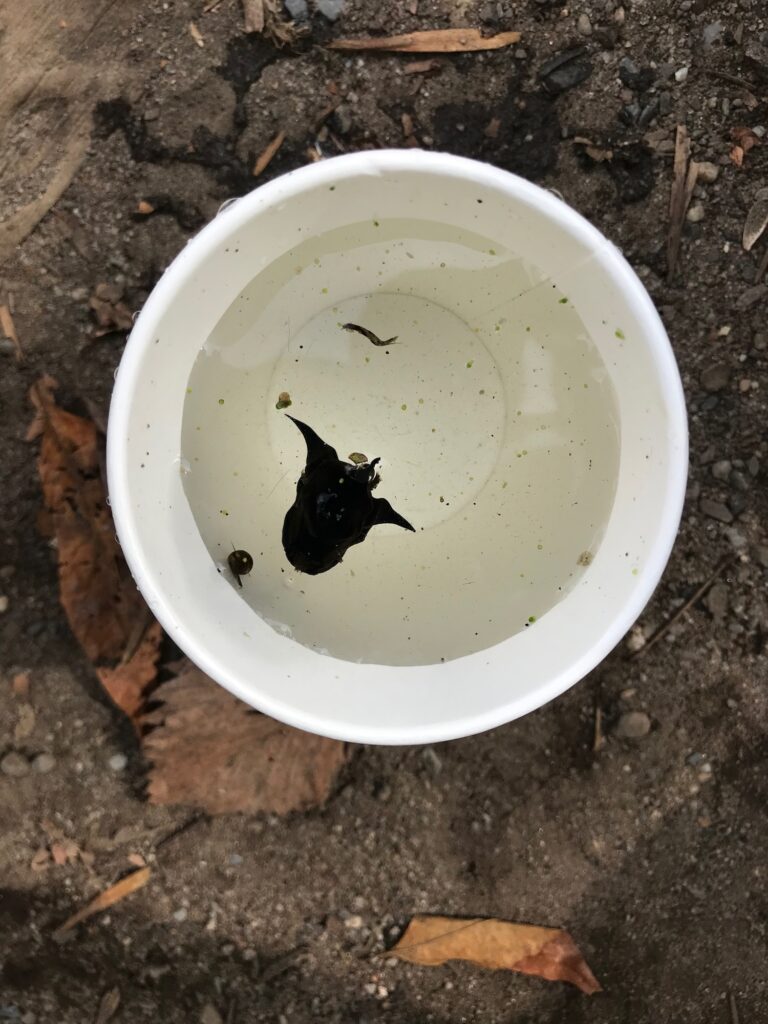
“Where is your spray bottle?” – Good point, I said. “You have to use a lot of water.” — this stuck with me the most, as I notice I draw with the watercolor brush and I could invite more flow. “Block in the shapes” “Develop your darks” “Don’t just use greens because it can get too boring” and so on. He was obviously well versed in teaching, and I was happy to have him use the brush for a bit to show me some examples. We had met before in passing but I don’t think he remembered. There is a kindness in painting with a stranger’s brush as a true teacher where some may see hubris.
Some friend’s of his approached and said with a laugh, “You giving him some pointers Jerry?”
They said they would be back to check on my progress.
The benches to my left at times hosted a young family with a toddler feeding the ducks, a woman and her elderly mothers, a solitary biker stopping for a pensive bite to eat, a man smoking a cigar watching a tv show and grinning. Different walks of life all brought themselves to meet this view, creating meaning. One couple asked to have their photograph taken in front of the lake with their dog. “Here we are, our backs to this beautiful scenery posing for you the viewer, we are here.” Another fellow during his daily swan tracking efforts asked if I had seen the swans. “They just flew from mid-lake about 30 minutes ago.” He happily decided they must have gone to the other spot he knows that they like to go.
Yoshiko kindly brought me a sweatshirt so I could make it through the painting session. A long line of people approached noisily, with drums, signs, trumpets and chants. A group of Bronx activists had organized a march up the Tibbetts Brook corridor, with signs like “Protect the water.” And “Water is life.” They stopped for a ceremony on the rail bridge over the lake, directly to the left of the view of my painting. They played some drums, spoke about the Lenape people who lived here, and dropped a bouquet of herbs into the water for environmental justice enveloping land, water, and people.
My friend Benni, one of the top citizen scientists in the park was walking with them. I stood with him and held my cardboard “DAYLIGHTING TIBBETTS BROOK” sign for a bit and listened.
I was struck by the chance encounter.
The water is with us, and we are with the water.
Forgotten relationships and collective agreements, still in process of being discovered.
